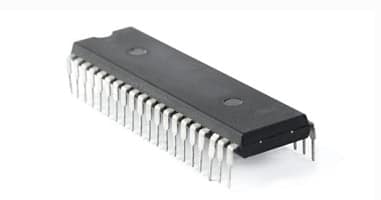What is science fiction?
We explain what science fiction is and what its elements are. In addition, origin, characteristics and examples of science fiction.
-
What is science fiction?
Science fiction is a subgenre of fiction literature ( narrative , mainly), cultivated from the twentieth century on various print media and with different audiences and acceptance, whose principle lies in the creation of speculative stories about the impact of Science and technology in the life of the human being.
Traditionally, science fiction is thought of as a genre that dreams of future worlds and with future technological capabilities , a consideration that makes the genre depend heavily on a divinatory capacity, such as that attributed to Julio Verne, a writer who predicted balloon trips and in submarine in his adventure novels .
However, the science fiction proposal is much more complex. The range of topics that usually interest him ranges from future dystopian and future societies , to parallel worlds, robots, interstellar or time travels , virtual realities, alien cultures or physical dilemmas of known reality . Any subject that raises a fictional story sustained in the extrapolation (exaggeration, assumption, theorization) of the discourse of science and technology can belong to this narrative genre.
Science fiction authors have profusely cultivated the genre of the story and the novel, although it is possible to find works inscribed in this genre in the media of cinema , animation, comics and video games. This is due to the enormous popularity that the genre has acquired from the mid-twentieth century to the beginning of the twenty-first, thus becoming one of the most popular and commercially and commercially exploited popular imaginary.
-
Origin of science fiction
Although there are literary works well before the creation of the genre but that could well be considered its predecessors, such as Frankenstein de Mary Shelley , the works of Jules Verne, and even the myths of the Jewish Golem and some accounts of the Bible, it is estimated as the beginning from science fiction to the early twentieth century.
In particular the decades between 1920 and 1930, in which the great economic depression drove the need in the younger generations of the consumption of escapist stories, fantastic, that allowed them to enter other parallel realities and escape their own. This is how the first comic books that popularize the genre were born, such as Amazing Stories by Hugo Gernsback .
This origin explains the aura of contempt and marginalization with which the genre will be considered in the future, associating it with escapist and popular low- rise literature . However, in the following years authors of the literary caliber of Isaac Asimov, Robert Heinlein and Arthur C. Clarke will cultivate the science fiction novel and story with great artistic merit.
Other authors who confirmed the place of this speculative genre in universal literature were Phillip K. Dick, Ray Bradbury, Stanislav Lem, and even Adolfo Bioy Casares and Jorge Luis Borges.
-
Science Fiction Features

In general, we can identify science fiction as a genre characterized by being:
- Eminently narrative, either long or short breath, although there are also rare forays into the world of poetry .
- Interested in scientific and technological discourse, whether as an excuse to question yourself about reality, time , life , death and other transcendental issues of humanity.
- Having a certain margin of technological prediction, attributable more than anything to this genre inquiring into the dreams and fantasies of humanity that science is committed to making reality.
-
Science fiction examples
Some examples of literary works of science fiction are:
- Me, Isaac Asimov’s robot ;
- Appointment with Rama by Arthur C. Clarke;
- Martian chronicles of Ray Bradbury;
- I am a legend of Robert Matheson;
- The invention of Morel by Adolfo Bioy Casares;
- Neuromancer by William Gibson.
-
Science fiction elements
Each author of the genre freely addresses their concerns and interests, as in any other. Even so, it is possible to trace some of the recurring motives of gender in a series of conflicts:
- The human inventiveness . The development of innovative technologies that jeopardize the stability of life as we know it, or that have a catastrophic or unfair or morally challenging impact on the way societies are organized, such as biotechnology, time travel, etc. .
- Space adventure . The exploration of the universe and the positive, negative and surprising consequences that this entails, such as contact with extraterrestrial cultures, the formation of galactic governments , the encounter with the origins of the universe, the encounter with God.
- Unplanned natural phenomena . The use of science and technology as allies of man in the struggle to preserve his home (cataclysms) or to flee from extinction at the hands of unpredictable and unstoppable natural forces.
- Artificial intelligence . The robotics and exploration of artificial intelligence, with all ethical and moral questions involved, if not the confrontation between man creator and creation.





